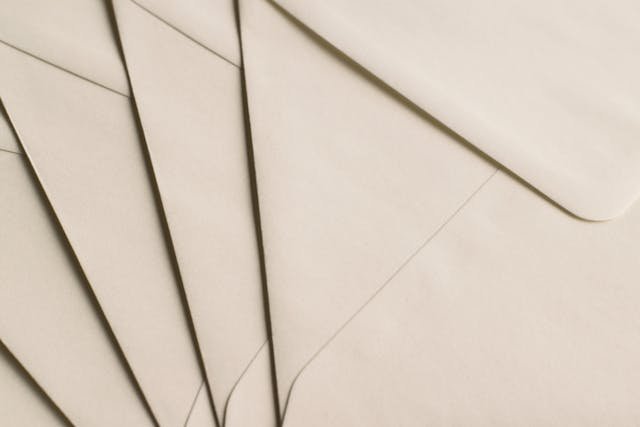Have you ever wondered about the intricate details of Chinese letter format? Do you know how to convey respect and professionalism through your writing in traditional Chinese style? Whether you’re a business professional or simply curious about the art of Chinese letter writing, this guide is for you. Explore the rich heritage of Chinese letter format, learn the structure of formal letters, and discover the nuances of tone and style in this comprehensive guide. Get ready to master the art of writing Chinese letters and make a lasting impression!
Table of Contents
ToggleUnderstanding Chinese Letter Structure
When it comes to writing formal Chinese letters, understanding the proper structure is crucial. The way a letter is structured reflects respect and professionalism in the Chinese culture. In this section, we will delve into the key elements and sections that make up a formal Chinese letter, providing you with examples that showcase the correct format.
The Heading
Every Chinese letter begins with a heading, which includes the sender’s information. The sender’s name, address, and contact details are typically placed at the top left corner of the letter.
Date and Recipient’s Information
After the sender’s information, the date in the Chinese format is written, followed by the recipient’s information. The recipient’s name, address, and contact details are placed below the date, aligned to the right.
Greetings and Opening
The opening of a Chinese letter typically begins with a polite and respectful greeting, such as “尊敬的” (zūn jìng de) for a formal letter or “亲爱的” (qīn ài de) for a more familiar tone. The opening paragraph should establish the purpose of the letter and set a positive tone for the rest of the correspondence.
Main Body
The main body of the letter is where you convey your message or request. It is important to be clear, concise, and polite in your communication. Use proper Chinese writing etiquette, avoid colloquial language, and remember to incorporate cultural elements when appropriate.
Closing
In Chinese letters, the closing is as important as the opening. Common closing phrases include “此致” (cǐ zhì) followed by a respectful closing, such as “敬礼” (jìng lǐ) for formal letters or “祝好” (zhù hǎo) for a more casual tone. The sender’s name is signed below the closing, accompanied by a formal title or position if applicable.
By understanding the structure of Chinese letters and practicing proper etiquette, you can effectively convey your message and leave a positive impression on the recipient. Let’s now move on to the next section where we will guide you through the step-by-step process of writing a Chinese business letter.
Writing a Chinese Business Letter
When it comes to writing a Chinese business letter, understanding the proper format and etiquette is essential. In this section, we will guide you through the step-by-step process of composing a Chinese business letter that conveys respect and professionalism.
1. Start with the Proper Template
A Chinese letter template provides a structured outline for your correspondence. It helps ensure that you include all the necessary components and follow the correct format. Begin with a respectful salutation, such as “Dear [Recipient’s Last Name],” followed by an appropriate greeting.
2. Address the Recipient with Proper Courtesy
Chinese culture places a strong emphasis on showing respect, especially in formal communication. Use honorific titles and polite language to address the recipient. It is also important to consider the recipient’s position and rank in relation to yours, as hierarchy plays a significant role in Chinese business interactions.
3. Clearly State the Purpose of Your Letter
Clearly and concisely state the purpose of your letter in the opening paragraph. Be direct and specific, avoiding unnecessary details. This helps the recipient understand the intent of your communication from the beginning.
4. Provide Background or Supporting Information
If necessary, provide relevant background or supporting information in the main body of the letter. This helps provide context and allows the recipient to fully understand the importance and implications of your message. Use a professional tone and avoid unnecessary personal opinions or anecdotes.
5. Use Polite and Respectful Language
Throughout your letter, maintain a polite and respectful tone. Use honorifics and formal language to show deference and professionalism. Be mindful of cultural nuances and avoid using overly direct or confrontational language.
6. Sign Off with Courtesy
End your letter with an appropriate closing phrase, such as “Yours sincerely” or “Best regards.” Sign your name clearly and legibly, using your full name and appropriate professional titles, if applicable.
By following these steps and adhering to Chinese business letter etiquette, you can effectively convey your message and build strong relationships in the Chinese business context.
Traditional Chinese Writing Style
In the realm of Chinese letter writing, the traditional Chinese writing style holds immense significance. It is not merely a means of communication, but a true art form that reflects Chinese culture and heritage. Every stroke, every character, carries a deeper meaning and conveys a sense of respect and reverence.
At the heart of the traditional Chinese writing style is calligraphy. The graceful brushstrokes and intricate characters add beauty and elegance to every letter. Each stroke is carefully crafted, showcasing the skill and dedication of the writer. Calligraphy is not just a writing technique; it is an expression of emotion and a reflection of the writer’s personality.
In addition to calligraphy, other artistic elements are often incorporated into Chinese letters. These include the use of seals, decorative paper, and beautiful envelopes. The paper chosen for the letter is carefully selected, usually crafted from bamboo or rice paper, enhancing the overall presentation and reflecting the traditional values of Chinese culture.
The formal Chinese letter structure is deeply rooted in tradition. Proper placement of characters and adherence to specific formats is essential to maintain the integrity of the letter. Each section of the letter has its purpose, whether it’s greetings, salutations, or body content. Abiding by the traditional Chinese letter structure ensures that the letter is received with the respect it deserves.
By embracing the traditional Chinese writing style and following the formal Chinese letter structure, you demonstrate your reverence for Chinese culture and your commitment to professionalism. Understanding and implementing these elements in your letters will undoubtedly leave a lasting impression on the recipient.
Chinese Letter Writing Conventions
When it comes to Chinese letter writing, there are specific conventions and cultural norms that should be followed to demonstrate respect and professionalism. Understanding and adhering to these conventions is crucial for effective communication. In this section, we will explore some essential aspects of Chinese letter writing conventions and the formal Chinese letter structure.
Salutations and Greetings
Chinese letter writing typically begins with a formal salutation, which acknowledges the recipient and sets the tone for the rest of the letter. Common salutations include “尊敬的” (zūn jìng de) for Dear, “敬启者” (jìng qǐ zhě) for To, and “敬意” (jìng yì) for Respect. It is essential to address the recipient using the appropriate honorifics, such as “先生” (xiān shēng) for Mr., “女士” (nǚ shì) for Mrs./Ms., or their professional title.
Greetings are also an important part of Chinese letter writing. Common greetings include “您好” (nín hǎo) for Hello, “祝好” (zhù hǎo) for Best wishes, and “请安” (qǐng ān) for Greetings. These greetings express politeness and respect towards the recipient.
Respectful Language
In formal Chinese letter writing, using respectful language is crucial. It is important to show deference and humility throughout the letter. Polite phrases such as “恳请” (kěn qǐng) for Kindly request, “衷心感谢” (zhōng xīn gǎn xiè) for Sincerely thank, and “恭请” (gōng qǐng) for Respectfully invite should be used to convey respect and courtesy.
Cultural Norms
In addition to salutations, greetings, and respectful language, there are other cultural norms to consider when writing a Chinese letter. For example, it is common to include a brief introduction or reference to a previous conversation to establish rapport. Expressing gratitude and well-wishes towards the recipient is also appreciated.
Furthermore, Chinese letter writing often incorporates indirectness and modesty. It is customary to downplay personal achievements and emphasize collective efforts or external factors. Stay mindful of these cultural nuances to ensure your letter is culturally appropriate and well-received.
By following these Chinese letter writing conventions and adhering to the formal Chinese letter structure, you can effectively communicate with respect and professionalism. Now that we have covered the conventions, let’s move on to Chinese business communication etiquette in the next section.
Chinese Business Communication Etiquette
In the context of Chinese business communication, understanding and adhering to proper etiquette is crucial for establishing successful relationships. Chinese culture places great emphasis on hierarchy, indirectness, and the use of honorifics. By following these guidelines, you can ensure effective and respectful interactions.
Hierarchy plays a significant role in Chinese business communication. It is important to be mindful of the relative status and position of the individuals involved. When writing a formal Chinese letter, address the recipient using appropriate honorifics that reflect their higher position. This demonstrates respect and acknowledges the hierarchical structure.
Indirectness is another key aspect of Chinese business communication. It is common for Chinese professionals to convey their thoughts and intentions in a subtle and indirect manner. This can be reflected in the language used in a formal Chinese letter, where polite and circumlocutory expressions are preferred. Being aware of this indirectness and adapting your communication style accordingly will help create a positive impression.
The use of honorifics is essential when addressing individuals in Chinese business communication. These honorifics vary depending on the relationship and formality of the correspondence. For example, using honorifics such as “Dear Mr.” or “Dear Madam” followed by the recipient’s surname adds a level of formality and respect to the letter.
When writing a formal Chinese letter, it is also important to observe the proper structure. Start with a formal salutation, followed by a polite greeting. The body of the letter should be concise and focused, conveying the intended message clearly and respectfully. Close the letter with a formal closing and a signature that reflects your professional identity.
By understanding and adhering to the etiquette of Chinese business communication, you can forge strong relationships and convey professionalism in your correspondence. Taking the time to learn and apply these cultural norms in your interactions will set you apart and enhance your success in the Chinese business world.
Mastering the Tone and Style of Chinese Letters
When writing Chinese letters, it is crucial to understand the nuances of tone and style. The traditional Chinese writing style, combined with the formal Chinese letter structure, sets the foundation for effective communication. By mastering these elements, you can convey respect and professionalism, while also adapting your tone to suit the recipient and purpose of the letter.
Understanding Different Writing Styles
Chinese letters can vary in writing styles based on the relationship between the sender and recipient. Formal letters, such as those exchanged in business settings, require a more serious and respectful tone. On the other hand, letters exchanged between friends or relatives can adopt a more casual and friendly style.
Adapting to Formalities
When writing formal Chinese letters, it is important to adhere to the established formalities. This includes using appropriate greetings, addressing the recipient with honorifics, and maintaining a respectful tone throughout the letter. These formalities showcase your understanding of Chinese etiquette and contribute to building strong professional relationships.
Matching Tone to the Purpose
The tone of a Chinese letter should align with its purpose. For example, a letter of gratitude should convey sincerity and appreciation, while a business proposal may require a persuasive and confident tone. Understanding the purpose of your letter allows you to adapt your style accordingly and effectively convey your message.
Personalizing Your Tone
While it is important to follow the traditional Chinese writing style and formal letter structure, adding a personal touch can enhance your letter’s impact. Consider incorporating personal anecdotes or anecdotes that resonate with the recipient. By injecting a bit of your personality into the letter, you can build a deeper connection and make it more memorable.
Mastering the tone and style of Chinese letters requires a combination of understanding traditional writing styles, adhering to formalities, matching the tone to the purpose, and personalizing the letter. By honing these skills, you can craft letters that effectively convey your message while demonstrating respect and professionalism.
Key Phrases and Expressions for Chinese Letters
When writing a Chinese letter, it is important to use appropriate key phrases and expressions to convey your message effectively. Here are some commonly used phrases and examples that you can include in your correspondence:
Greetings:
• 亲爱的 (qīn ài de) – Dear
• 尊敬的 (zūn jìng de) – Respected
Opening:
• 我先自我介绍一下 (wǒ xiān zì wǒ jiè shào yī xià) – Let me introduce myself first
• 写信向您致敬 (xiě xìn xiàng nín zhì jìng) – I am writing to show my respect to you
Expressing Gratitude:
• 谢谢您的关心和帮助 (xiè xiè nín de guān xīn hé bāng zhù) – Thank you for your care and assistance
• 我非常感激您的帮忙 (wǒ fēi cháng gǎn jī nín de bāng máng) – I truly appreciate your help
Making Inquiries:
• 请问…… (qǐng wèn) – May I ask…
• 请您告诉我…… (qǐng nín gào sù wǒ) – Could you please tell me…
Closing:
• 祝您身体健康,生活愉快 (zhù nín shēn tǐ jiàn kāng, shēng huó yú kuài) – Wishing you good health and happiness
• 谢谢您的耐心和理解 (xiè xiè nín de nài xīn hé lǐ jiě) – Thank you for your patience and understanding
Signing Off:
• 此致敬礼 (cǐ zhì jìng lǐ) – Best regards
• 敬祝商祺 (jìng zhù shāng qǐ) – Best wishes
Remember, using these key phrases and expressions will add authenticity and professionalism to your Chinese letters. Practice incorporating them into your writing to enhance your communication skills in Chinese letter format.
Tips for Polishing Your Chinese Letter
Once you have drafted your Chinese letter following the proper format and structure, it’s time to polish it and ensure it reads as professional and polished as possible. The following tips will help you elevate the quality of your letter:
1. Proofread and Edit
Before finalizing your Chinese letter, take the time to carefully proofread and edit it. Check for any grammatical errors, spelling mistakes, or improper word usage. Make sure the tone of your letter is consistent and convey your message clearly.
2. Format and Layout
Paying attention to the format and layout of your Chinese letter is crucial in creating a visually appealing document. Ensure that the paragraphs are well-structured, and there is enough whitespace between the sections. Use appropriate font styles and sizes for a professional look.
3. Maintain Proper Structure
While adding personal touches to your Chinese letter, it is essential to maintain the correct structure. Follow the proper order of sections, including appropriate salutations, introductions, main content, and closing remarks.
4. Add Personal Touches
While maintaining the formal structure, don’t be afraid to add personal touches that reflect your individuality and relationship with the recipient. Consider adding personalized greetings or closing remarks to establish a warm and friendly tone.
5. Cultural Sensitivity
When polishing your Chinese letter, ensure that you are mindful of cultural sensitivities. Pay attention to proper etiquette, polite language usage, and honorifics if applicable. This demonstrates respect and understanding for Chinese customs and traditions.
By following these tips, you can ensure that your Chinese letter is polished, professional, and conveys your message effectively to your recipient. Taking the time to refine and perfect your letter will leave a positive impression and help you achieve your communication goals.
Conclusion
Understanding the Chinese letter format and adhering to the cultural norms of business communication etiquette is crucial for establishing professional relationships in China. By following the traditional Chinese writing style and structure, you convey respect and seriousness towards your recipients.
Throughout this guide, we have provided you with insights into the key components of a Chinese business letter, including salutations, greetings, and respectful language. We have also highlighted the importance of mastering the tone and style, as well as incorporating key phrases and expressions.
Remember, when writing Chinese letters, maintaining a respectful and professional approach is paramount. Paying attention to hierarchy, using honorifics appropriately, and observing the nuances of indirectness will help you navigate the intricacies of Chinese business communication.
By embracing the Chinese letter format and business communication etiquette, you can build strong connections and promote successful collaborations in the Chinese market. So, whether you are establishing partnerships, negotiating deals, or simply exchanging information, adopting the customs and traditions of Chinese letter writing will greatly enhance your professional interactions.
FAQ
Why is understanding Chinese letter format important?
Understanding Chinese letter format is important because it conveys respect and professionalism. Adhering to the proper structure and etiquette demonstrates your understanding and appreciation of Chinese culture.
What is the traditional Chinese writing style?
The traditional Chinese writing style incorporates calligraphy, brushstrokes, and other artistic elements. It emphasizes the visual presentation of the written characters, making the letter visually appealing and expressing artistic expression.
How do I write a Chinese business letter?
To write a Chinese business letter, follow the formal format that includes the sender’s information, the recipient’s information, a salutation, the body of the letter, a closing, and your name and signature. It’s also important to use respectful language and proper etiquette.
What are the conventions in Chinese letter writing?
Chinese letter writing conventions include using the appropriate salutations and greetings, addressing the recipient with respect and using formal language. Additionally, it is customary to maintain a hierarchical tone, use honorifics, and observe cultural norms.
What is Chinese business communication etiquette?
Chinese business communication etiquette involves respecting hierarchy, practicing indirectness, and using honorifics to show respect to superiors and clients. It’s important to demonstrate humility, patience, and politeness in all interactions.
What tone and style should I use in Chinese letters?
The tone and style of Chinese letters should be formal, polite, and respectful. Adapt your tone based on the recipient and purpose of the letter. Follow the appropriate level of formality and use the appropriate expressions and phrases.
What are some key phrases and expressions for Chinese letters?
Common key phrases and expressions for Chinese letters include greetings, salutations, and respectful phrases expressing gratitude or well wishes. Examples include “敬启者” (respectful opening), “谢谢” (thank you), and “祝好” (best wishes).
How can I polish my Chinese letter?
To polish your Chinese letter, proofread for errors and typos, ensure proper formatting, and add personal touches while maintaining the correct structure. Pay attention to detail and consider seeking feedback from native speakers or language experts.
Why should I follow Chinese letter format and cultural norms in business communication?
Following Chinese letter format and cultural norms in business communication demonstrates cultural understanding and respect. It enhances your professional image, builds rapport with Chinese partners, and increases the chances of successful and effective communication.







